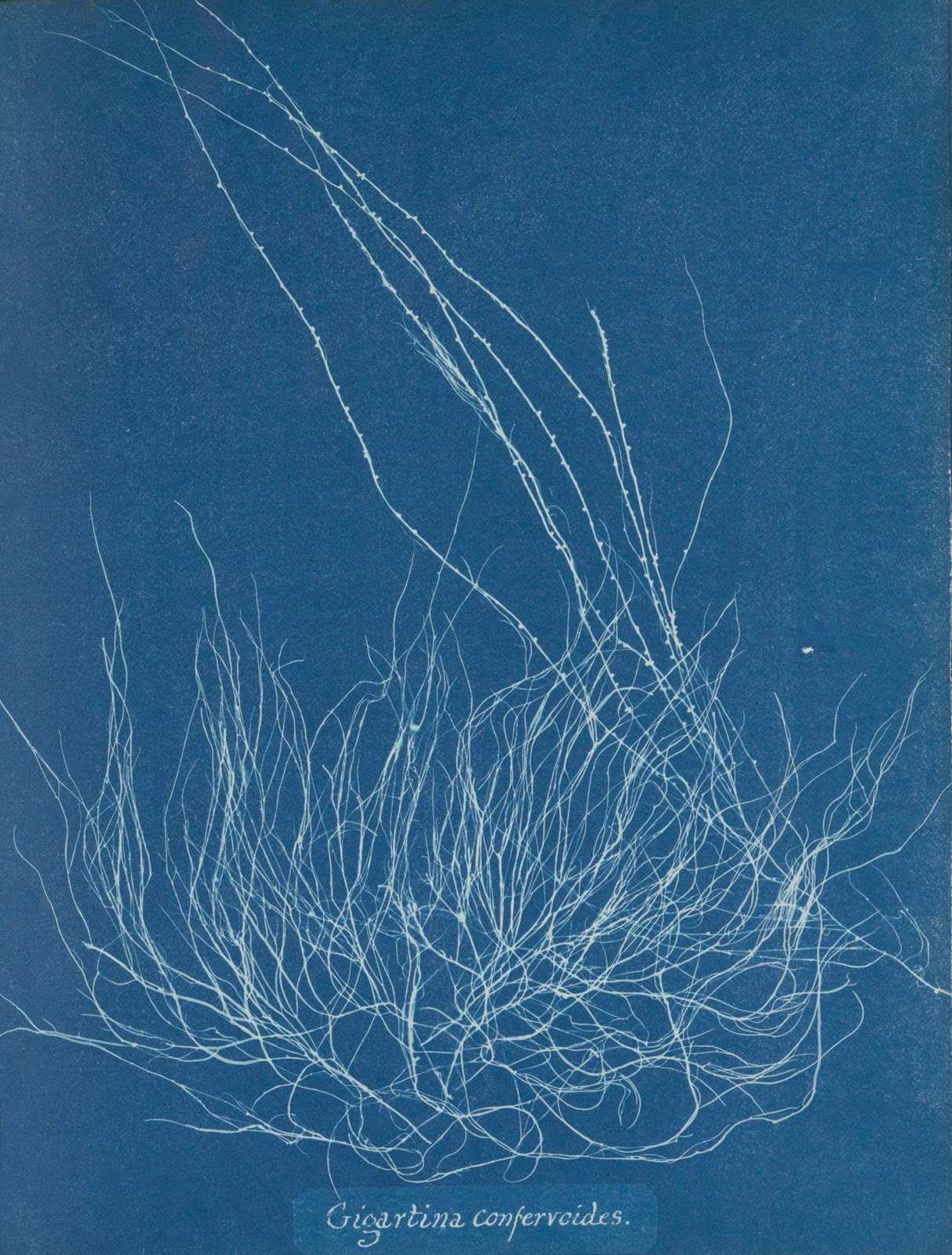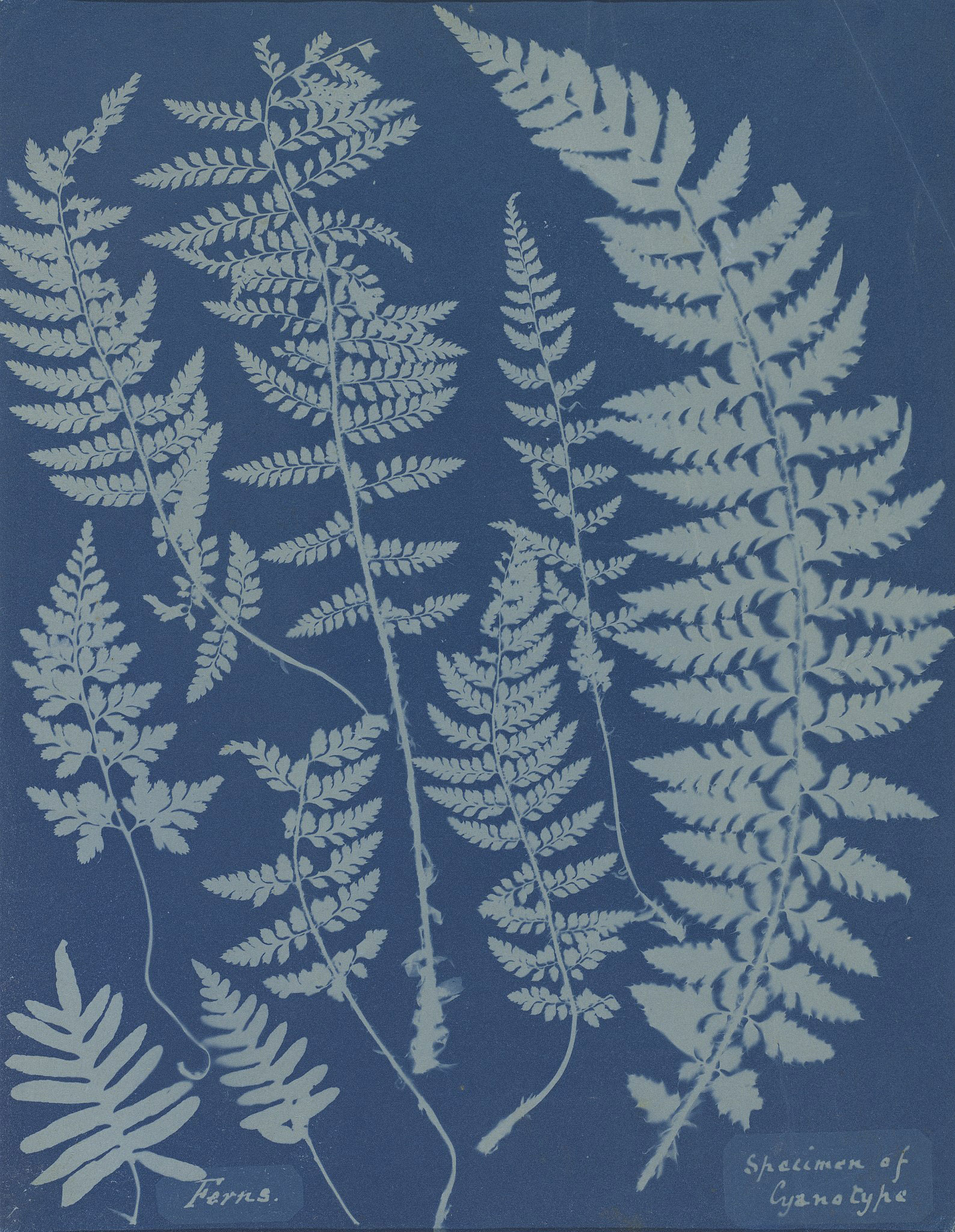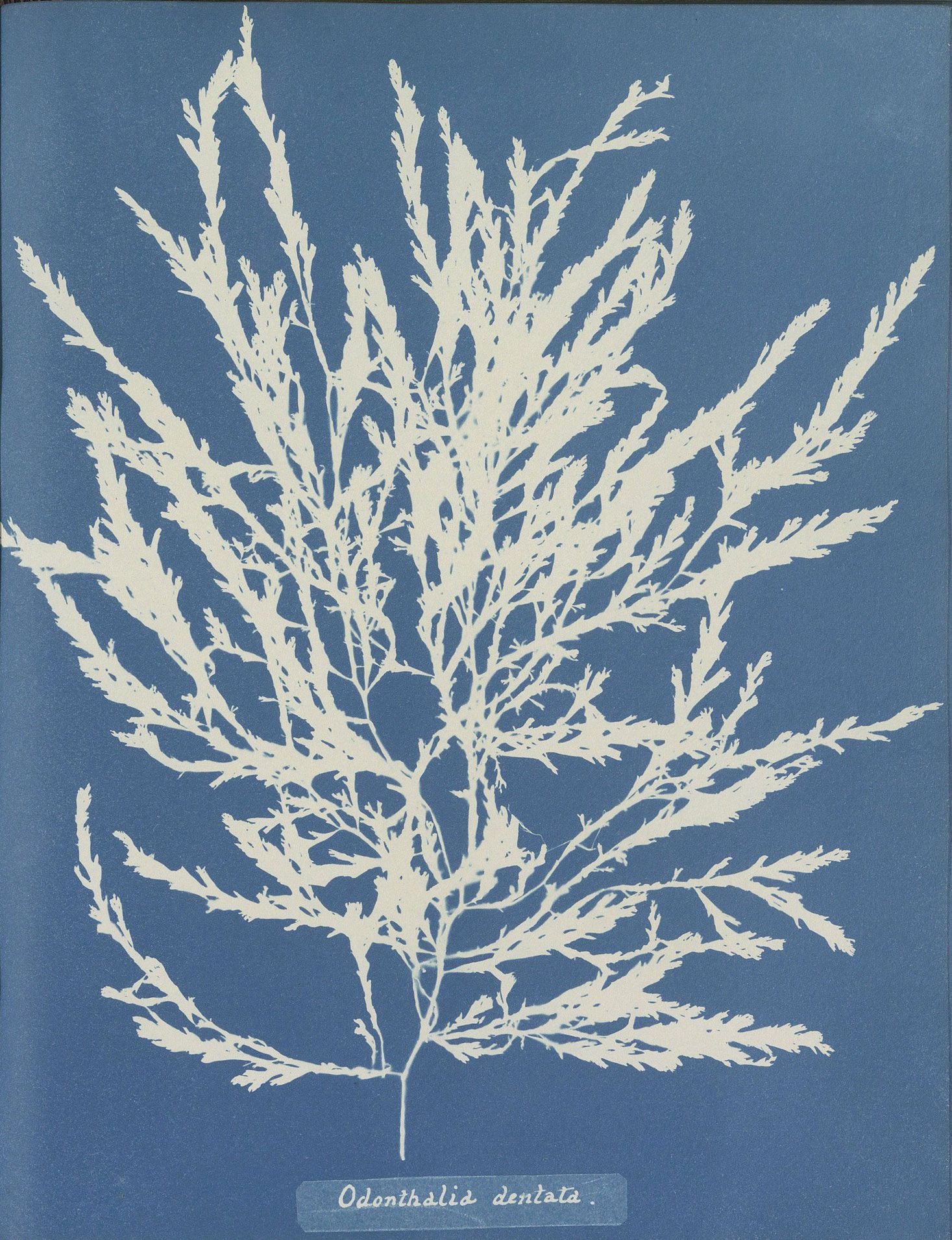Anna Atkins (1799-1871) was a British botanist and photographer. She was in direct contact with William Henry Fox Talbot, (the inventor of calotype, an early photographic technique), and with Sir John Frederick William Herschel, (the inventor of the cyanotype, a technique that allows the production of blueprints).
As a member of the London Botanical Society (since 1839), Anna Atkins decided to employ cyanotype to record algae specimens and provide an accurate record of her botanical studies. The technique consisted in placing specimens onto coated paper and letting light trace their silhouette.
In October 1843, she published Photographs of British Algae: Cyanotype Impressions, the first book illustrated with photographic images. Although scientifically accurate, Atkins’ images are much more than a pure botanical record. Atkins carefully studied the deployment of each plant on the page to emphasise their structure and the functional relationships of the seaweed’s stems. By associating more plants on a page, she also provided an impression of variation and movement, as happened later in Muybridge pictures.


Over time, she perfected the delay of exposure and the chemical solutions to provide more detailed and refined images. After algae, she moved to study terrestrial plants, namely ferns. The compositions became more complex and included stems, leaves and sometimes roots. In 1953 she published Cyanotypes of British and Foreign Plants and Ferns.






<!–
–>




